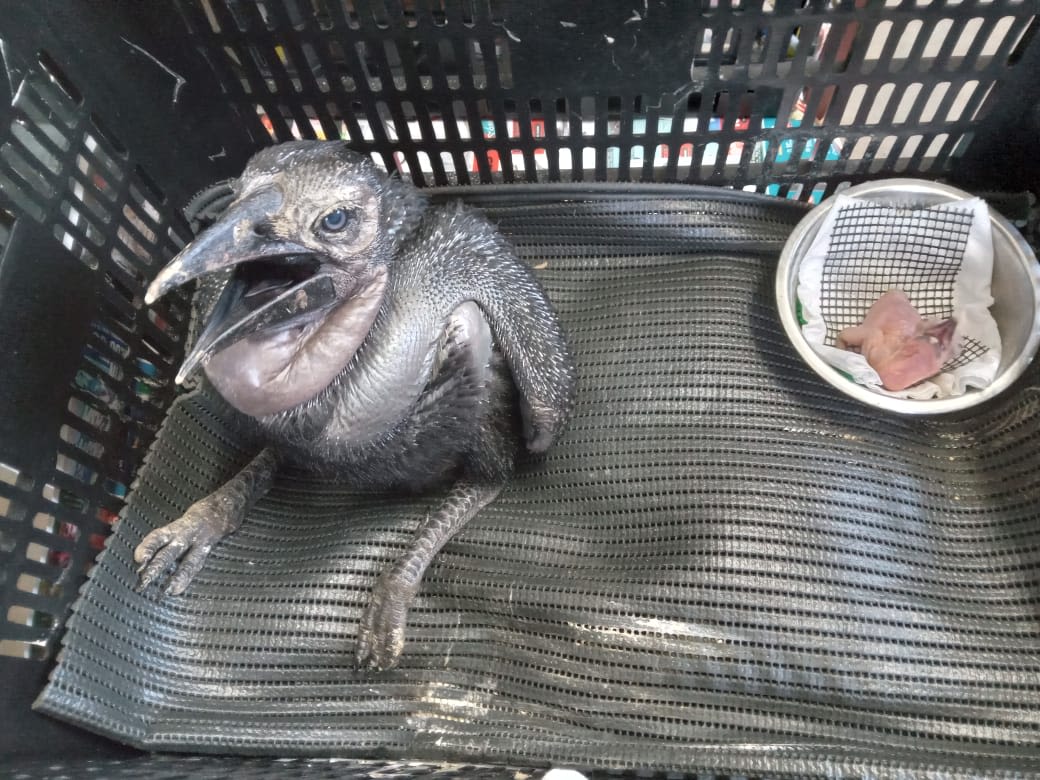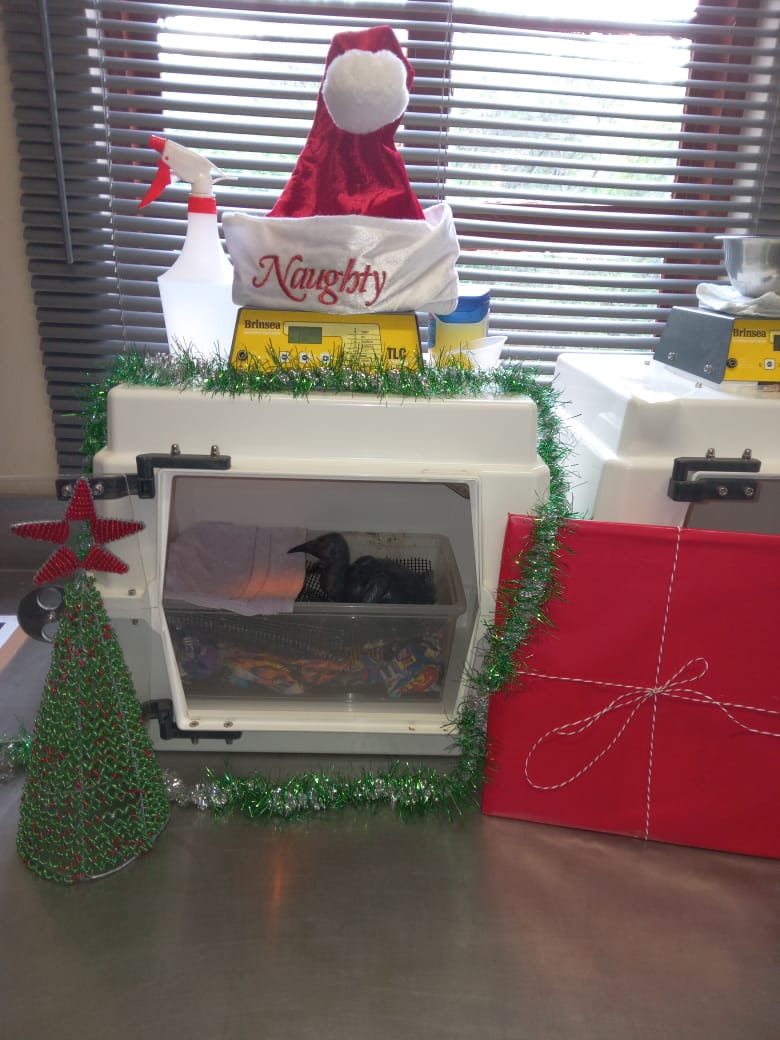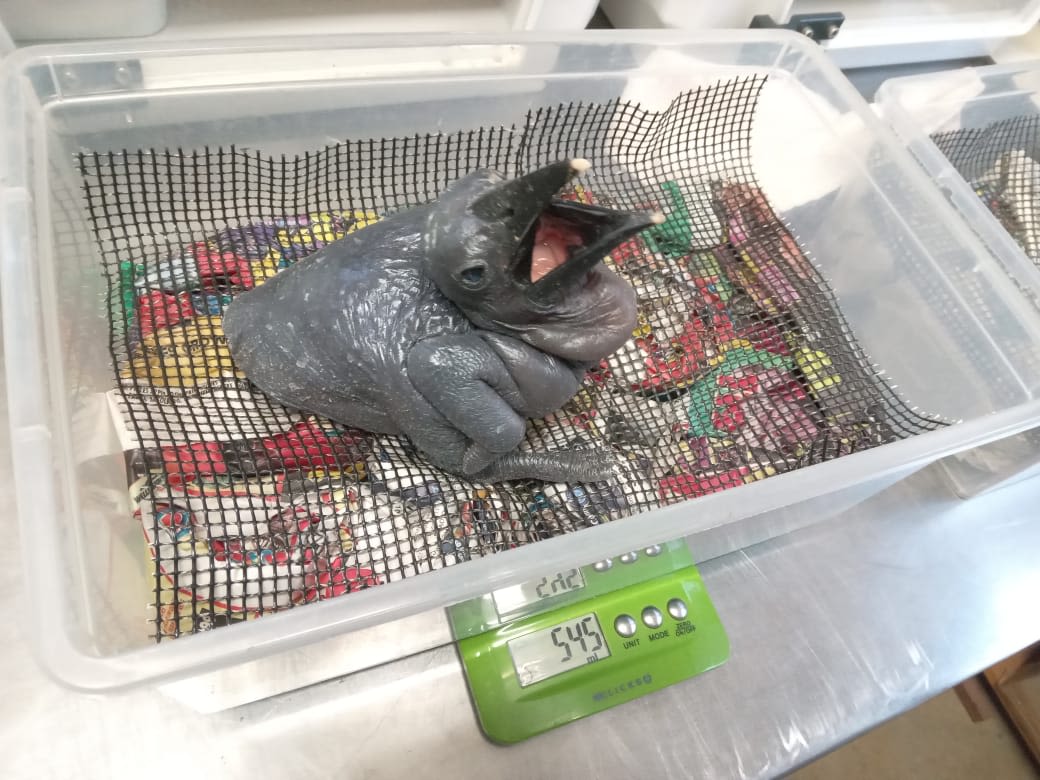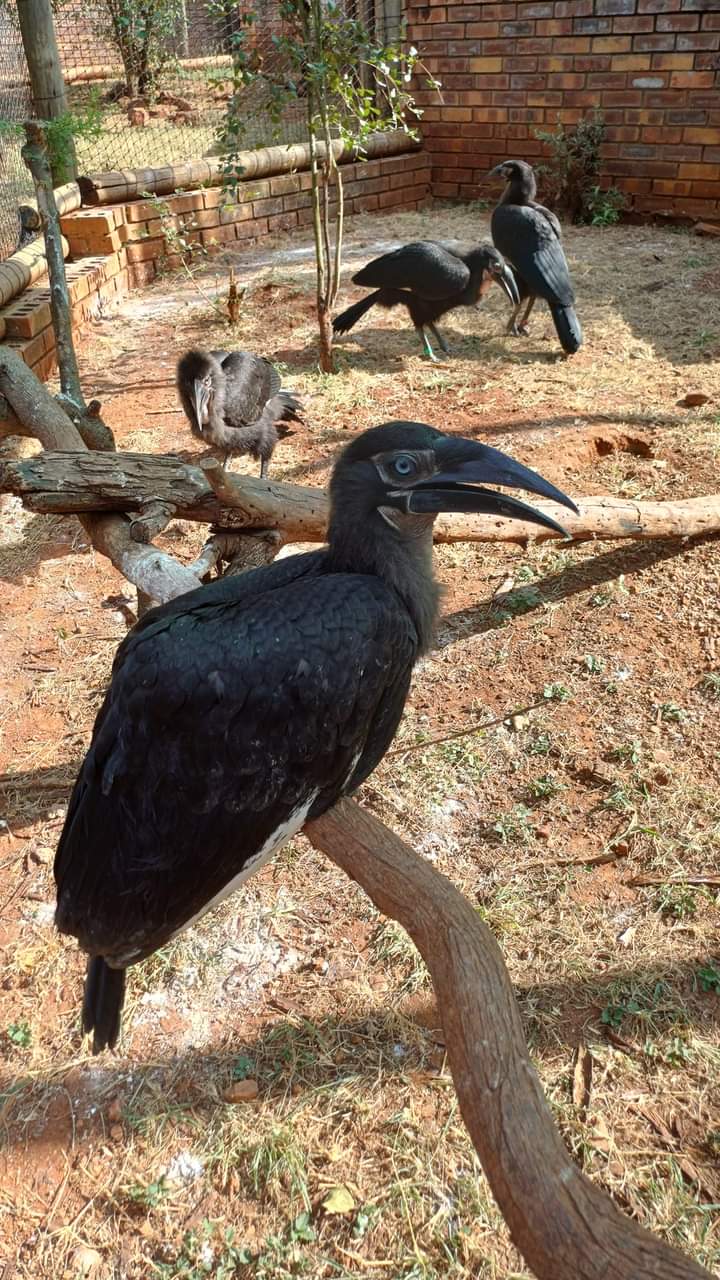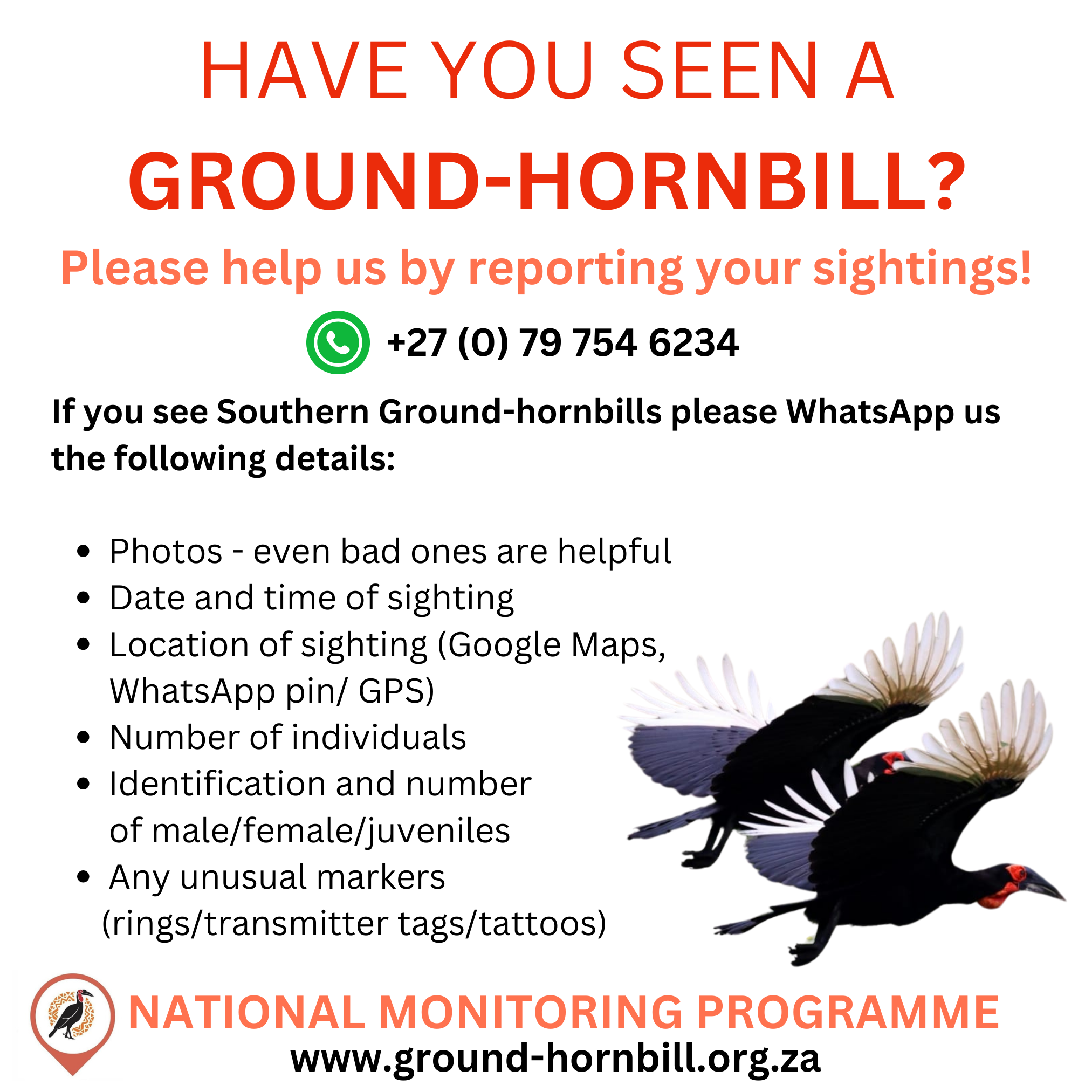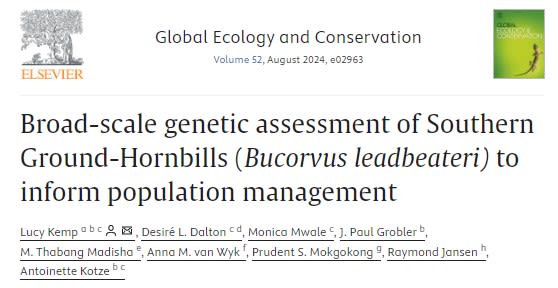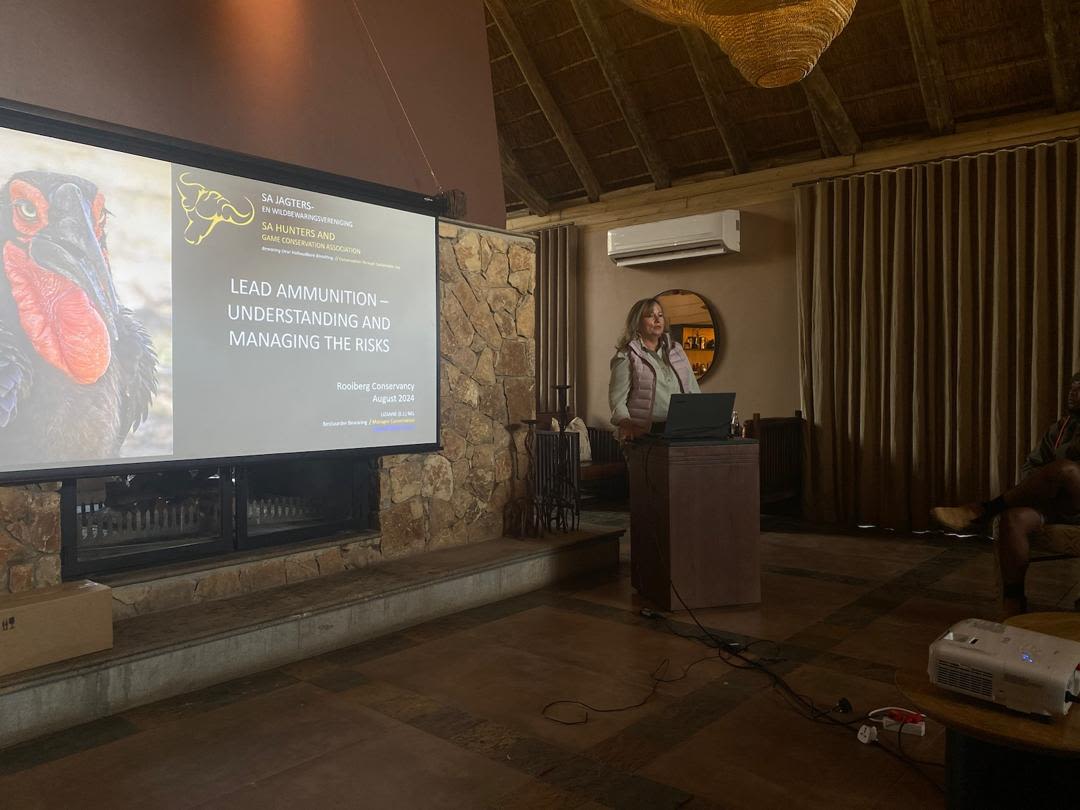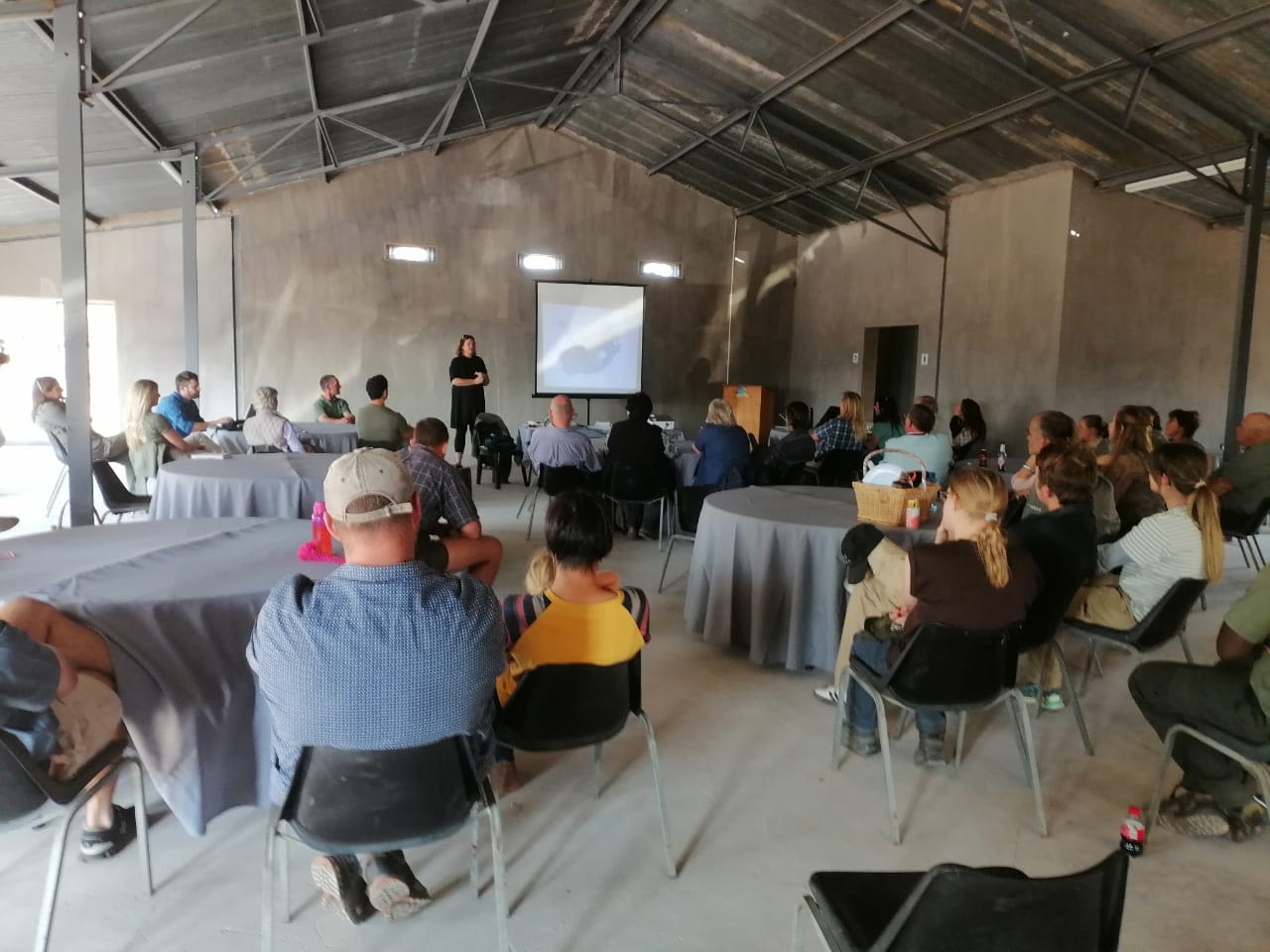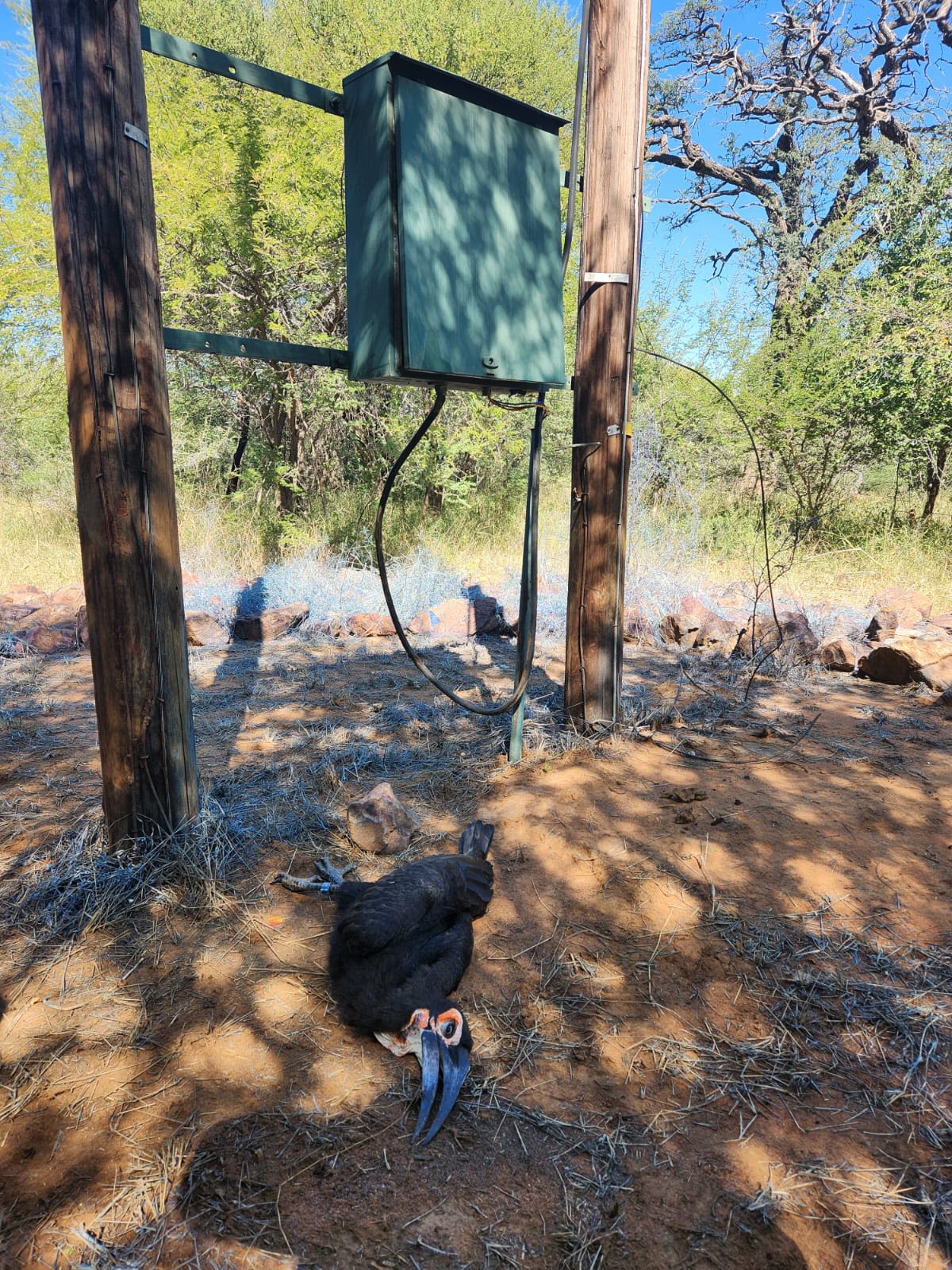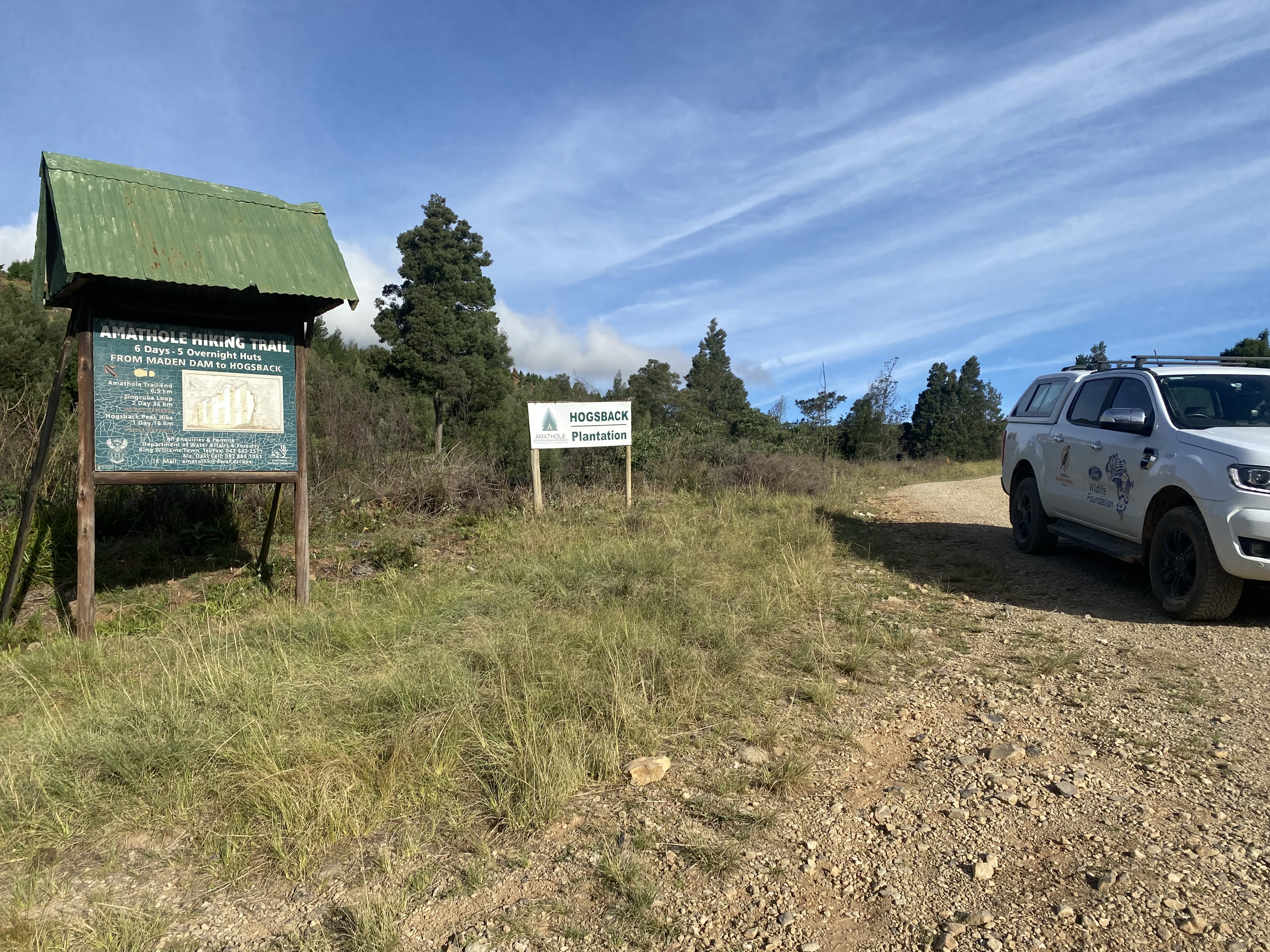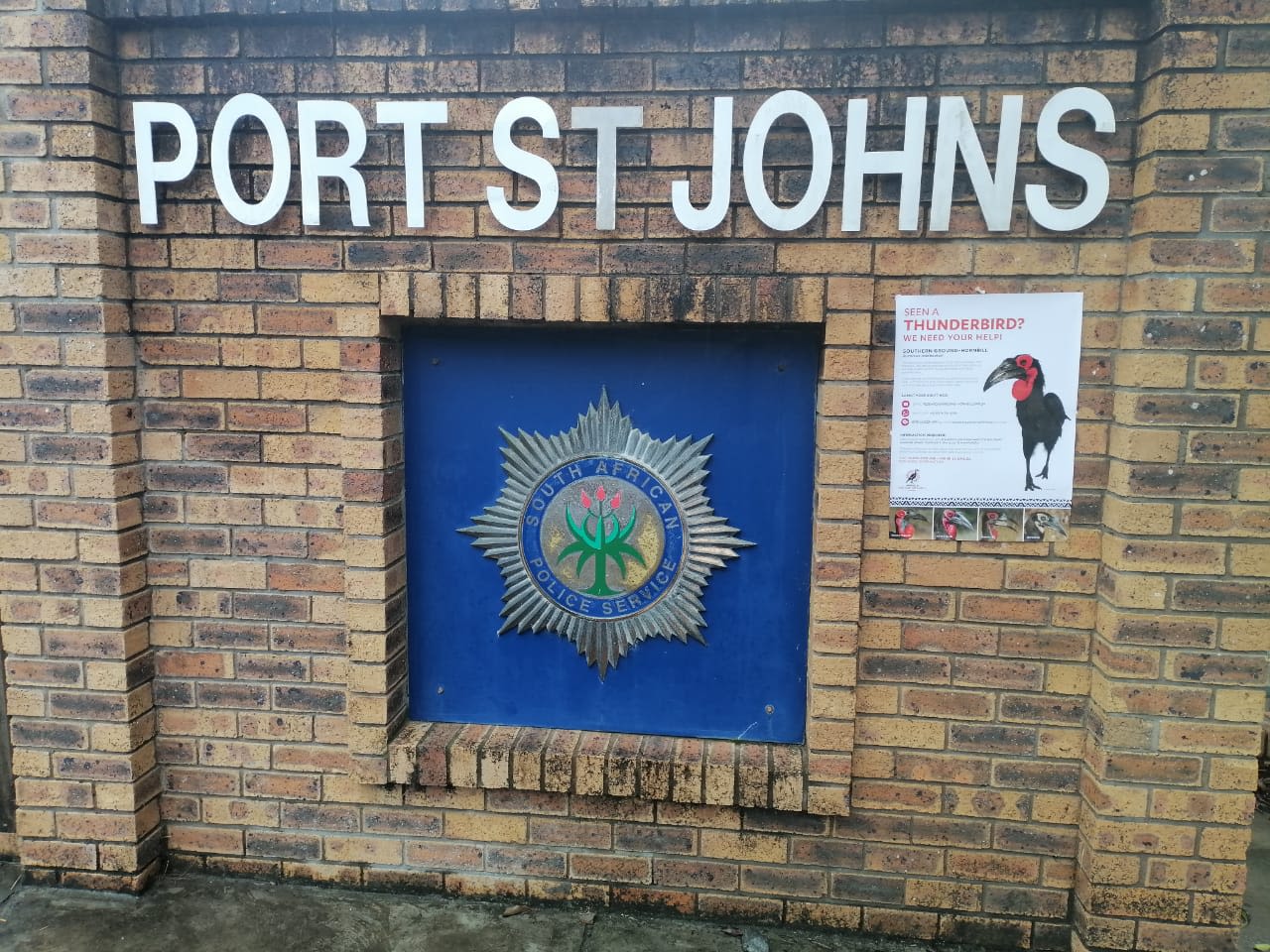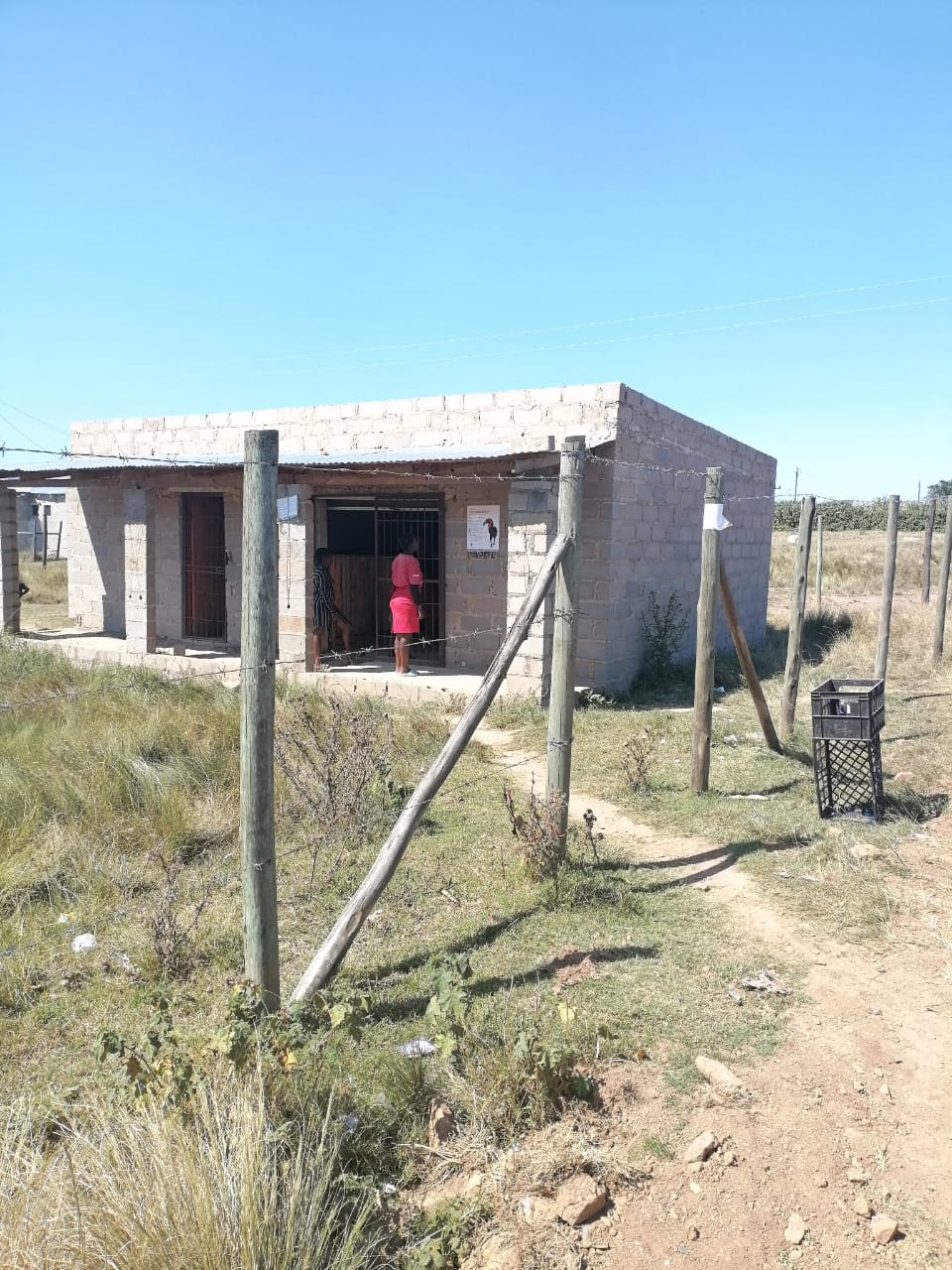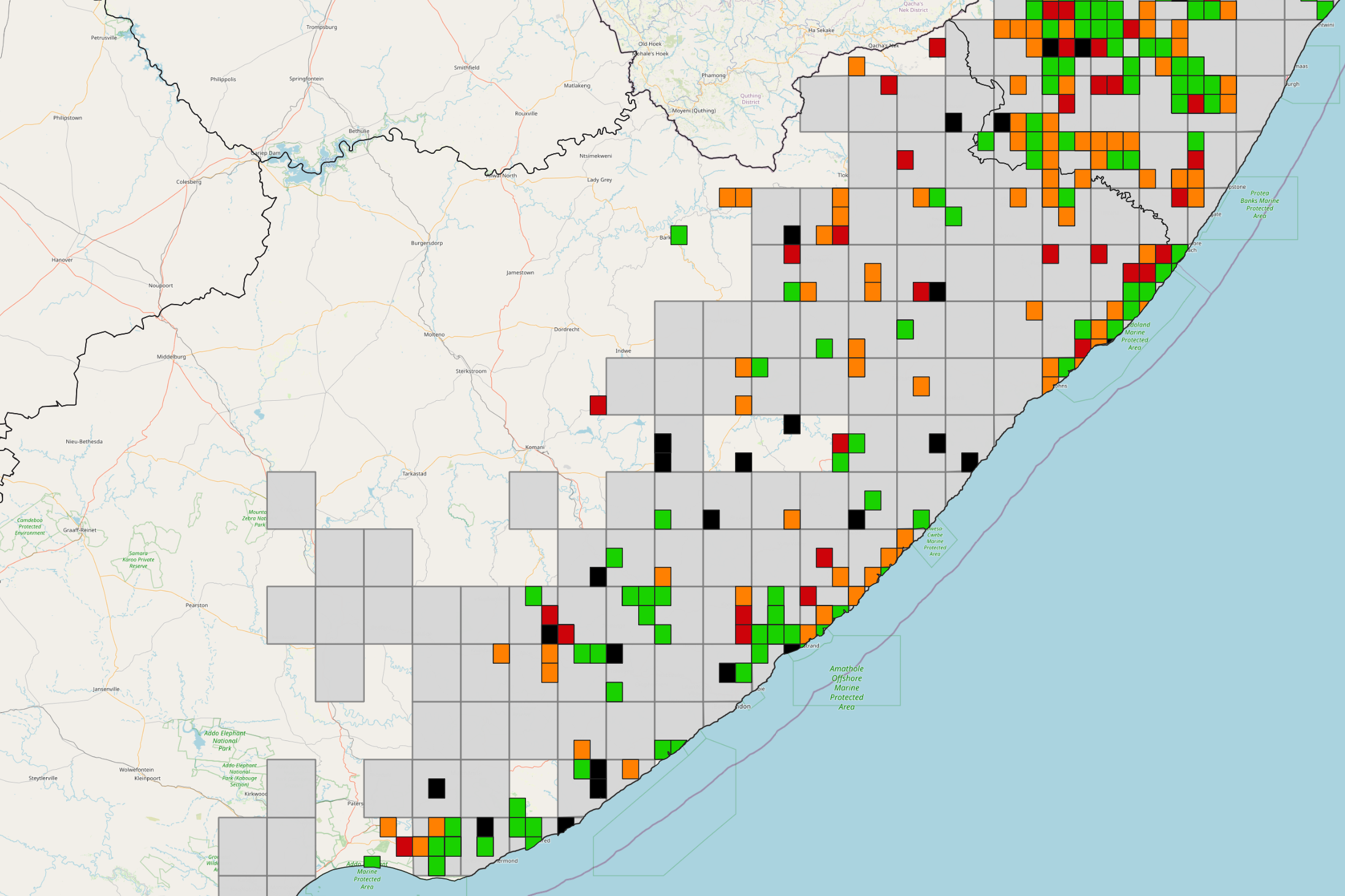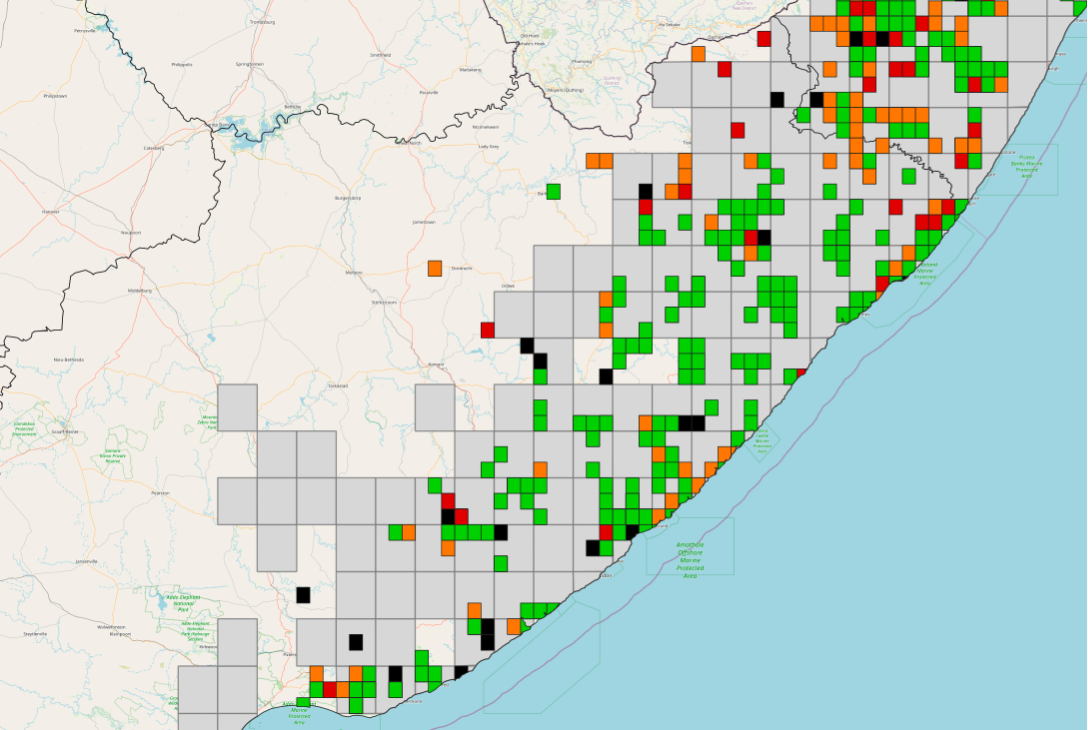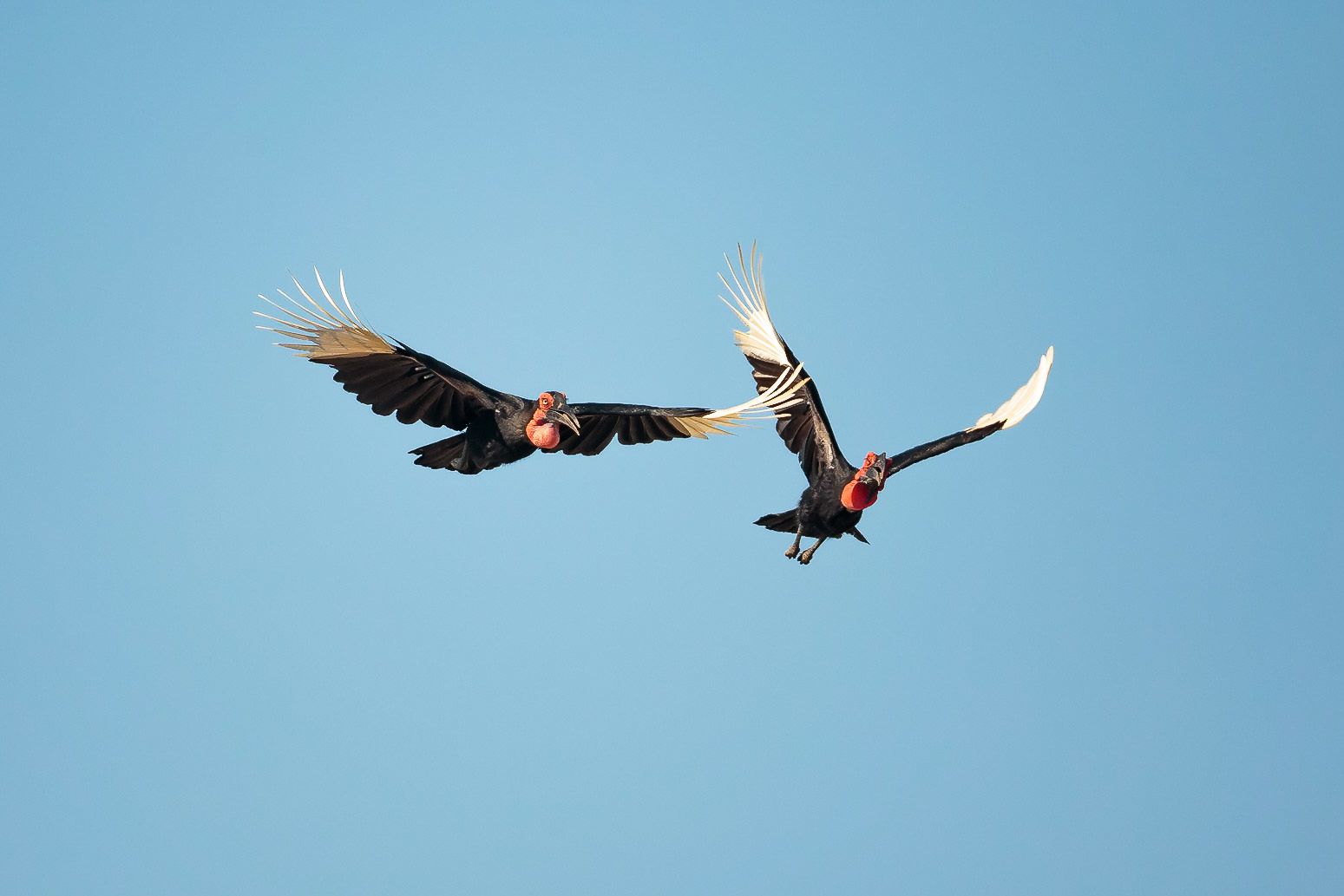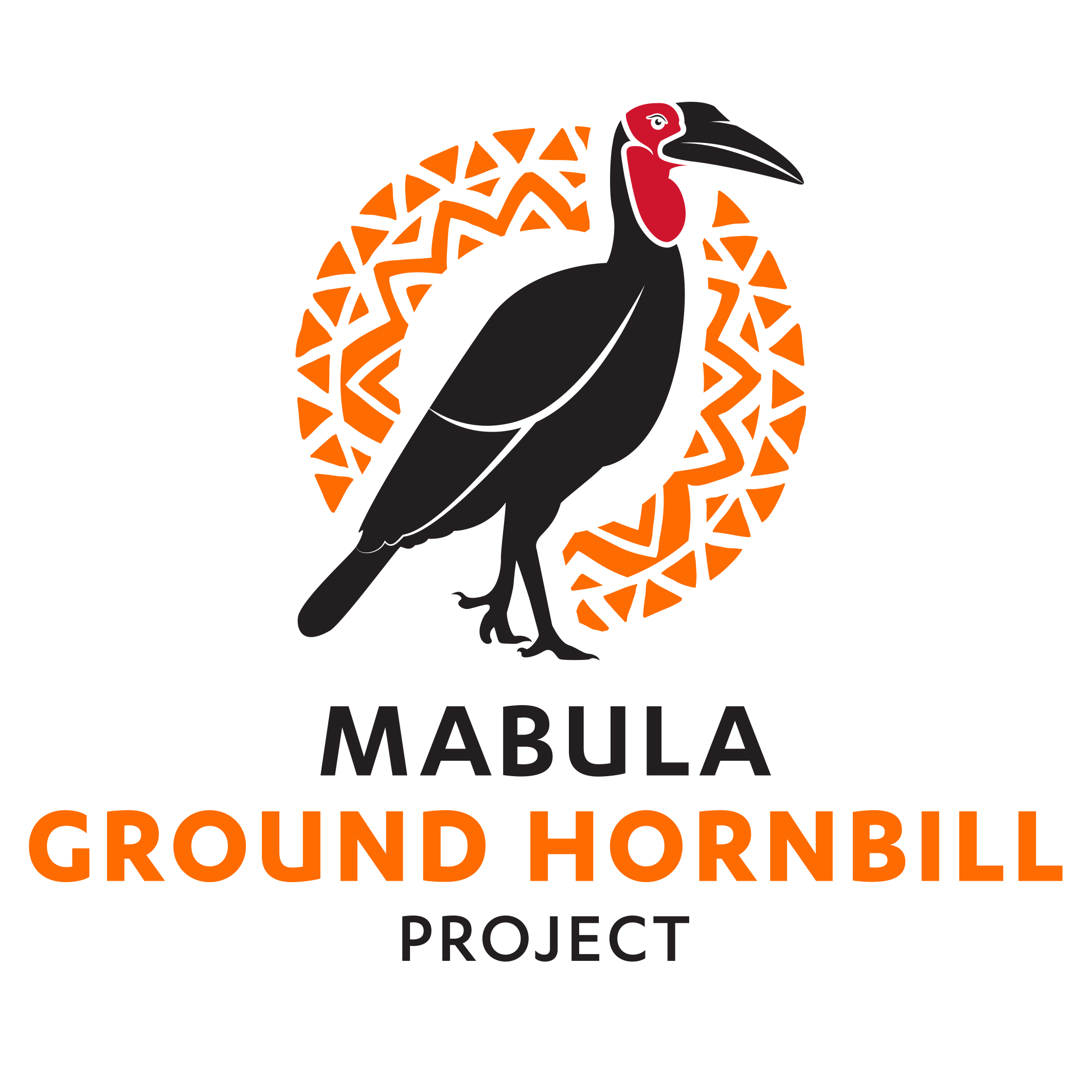THE THUNDER BIRD
MABULA GROUND HORNBILL PROJECT
NEWSLETTER
January - July 2024
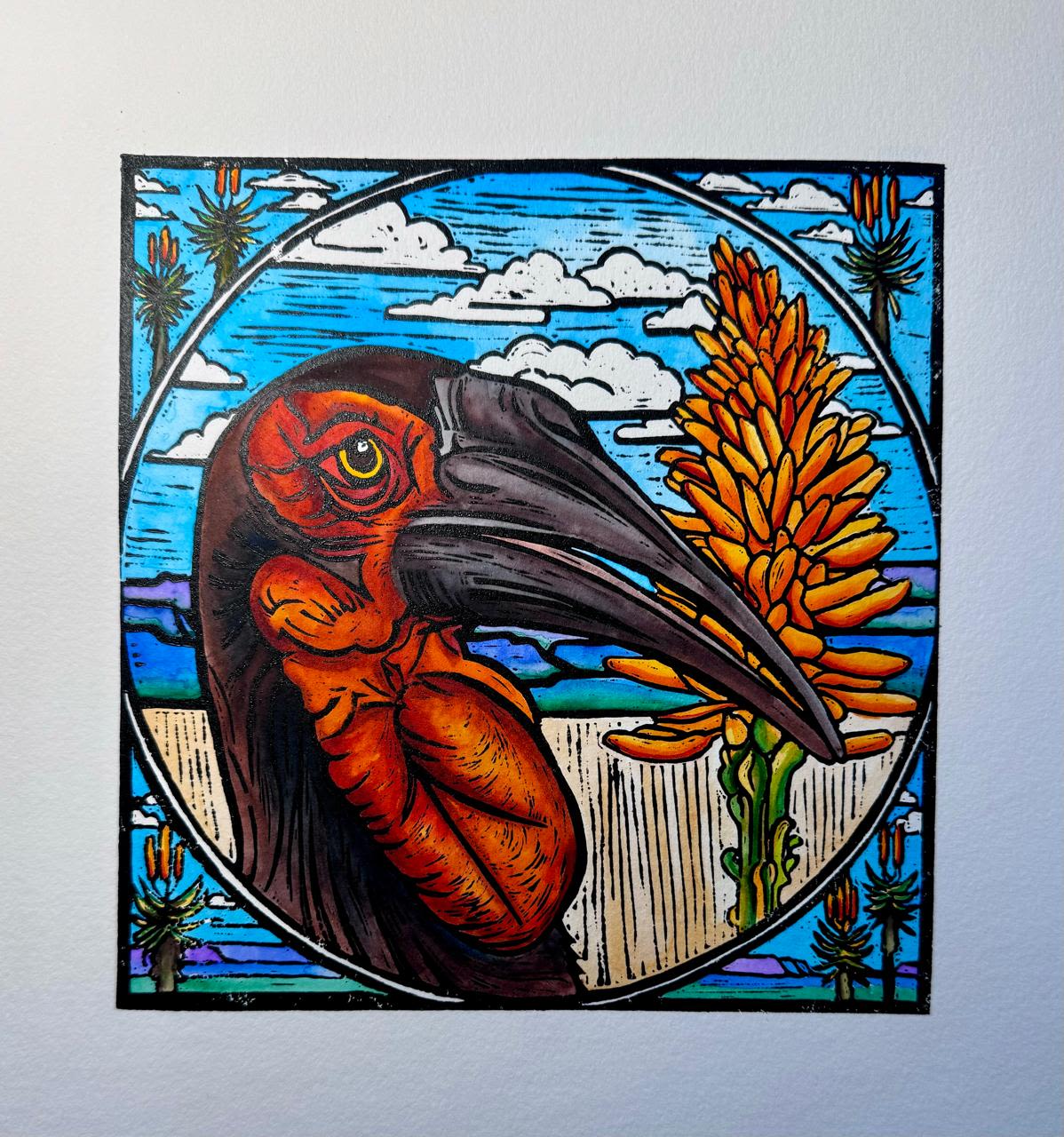
It has been a busy year at the Mabula Ground Hornbill Project, with many more exciting things to come as we gear up for a fast-approaching and packed field season. Read all about the last couple of months below:
Safe chick harvest with the BATELEURS
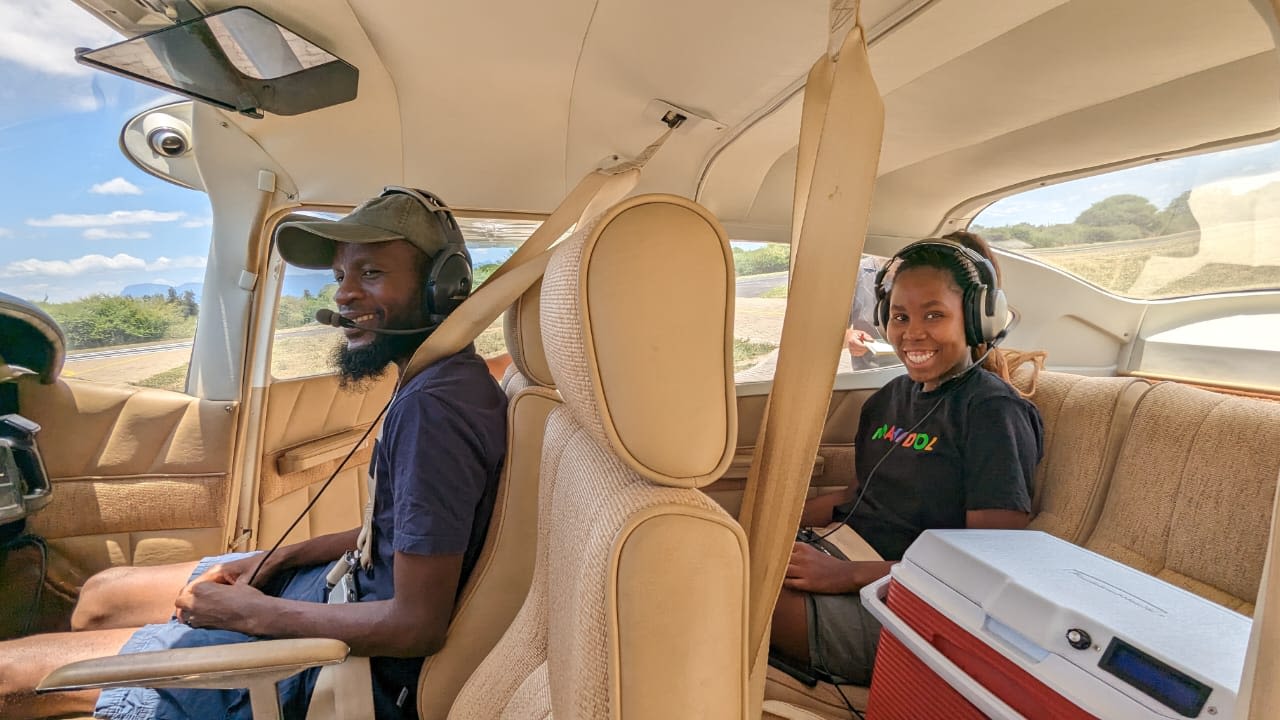
During the 2023/2024 breeding season, five second-egg harvested chicks were successfully hand-reared at the Baobab hand-rearing facility at Loskop Dam Nature Reserve. Our ex-situ coordinator and rearer Elaine Reeve joined the first harvest with the APNR Ground-hornbill Project team, and she then drove the chick back to Loskop. This was Elaine’s second season with the Project, and she felt a lot more confident this time around.
The Bateleurs (check out their amazing work here) graciously flew the chicks when the weather was favourable and most of the team had a chance to fly from the Lowveld to the Baobab.
Elaine had assistance from volunteer Kathleen Kemp who has some previous rearing experience and offered Elaine a great deal of support. WIL University of Mpumalanga conservation students Vuysile Mathonsi, Sibusiso Mahlalela and Silindokuhle Nkosi were phenomenal in carrying out all the tedious yet very necessary supportive tasks such as cleaning, food preparation and the endless collection of leaves for natural substrate. And as always, Delecia Gunn (MTPA), whose many years of hand-rearing experience offered valuable advice and support.
It was a long season as the harvest lasted just over a month and so having such a wonderful team was invaluable in successfully rearing the 5 chicks. The chicks reared were RhinoRoad, Caroline, Cruise, Baobab Ridge and York. York is the only male with the others all being female.
Each chick, as always, very much has their own very distinctive personality. Rhinoroad, the oldest, is a confident and outgoing bird, Caroline is curious, Cruise is the shy one, Baobab is cautious and York is the clown of the group.
The chicks have all been successfully introduced to their foster adults for socializing; some of whom we are thrilled to say are first-time parents and have taken to this role like they have been doing it for years. York is currently being introduced to two older birds, and he will be released in the coming months. One of the release groups on Loskop Dam Nature Reserve also successfully bred for the first time in several years, which is very exciting!
If you live in the Southern Ground-hornbill range and aren’t part of our Champions groups yet, consider joining us! By reporting your sightings, you play a part in helping protect them.
At last!! We have published the broad-scale genetic assessment.
The short answer is that we identified weak to moderate population structuring across long distances and mitochondrial data showed a shallow phylogeny. Restriction to long-distance dispersal was detected that could not be attributed to isolation by distance, suggesting that other factors, such as their dispersal biology, are shaping the observed genetic differentiation. Although our study does not support the designation of populations as independent conservation units, we advocate that population management should continue to follow the Precautionary Principle (mixing founders from the same or neighbouring range state, rather than allowing the mixing of founders from the extremes of the range).
We couldn't have done this without a world of support:
We want to thank all those who contributed samples over the years, especially the Kenyan Wildlife Services for wild-caught samples (funded by the Mohammed Bin Zayed Conservation Fund); Eric Pasquet at the Paris Museum for collation and earlier analysis support of the European captive individuals; Roger Sweeney and his team for the collation of the AZA captive samples; the following museums were gracious enough to allow sampling from their specimens: Paris National Museum of Natural History (France), National Museum of Namibia (Namibia), Livingston Museum (Zambia), Iziko Museum (South Africa), East London Museum (South Africa), Durban Museum of Natural History (South Africa), Ditsong National Museum of Natural History (South Africa), Natural History Museum (Zimbabwe), British Natural History Museum (Tring, UK). The following international captive facilities contributed DNA samples: Bioparc Fuengirola, Birdworld, Surrey, Brevard Zoo, Colchester Zoo, Cricket St Thomas Wildlife Park, Dvur Kralove Zoo, Gladys Porter Zoo, La Palmyre Zoo, Lotherton Hall Bird Gardens, Natura Artis Magistra, Ostrava Zoo, Parc Zoologique de Jurques, Parc Zoologique de Paris, Parc Zoologique et Botanique de Mulhouse, Paultons Park, Potawami Zoo’, Prague Zoo, Safari West, San Diego Wild Animal Park, Santa Barbara Zoo, Tampa Lowry Park Zoo, Touroparc Zoo, Tulsa Zoo, Virginia Zoological Park, Zagreb Zoo, Zoo d′Asson, Zoo de Lourosa, Zoo Olomouc, Zoo Santo Inacio, Zoologicka Garden & Chateau Zlin-Lesna, ZooParc de Beauval. In South Africa the following institutions contributed DNA samples: South African Biodiversity Institute, Johannesburg City Parks and Zoo, Mitchell’s Park Zoo, Bester Birds and Animals, World of Birds Wildlife Sanctuary and Monkey Park, Umgeni River Bird Park, Montecasino Bird Gardens, Mpumalanga Parks and Tourism Agency, Zaagkuilsdrift Bird Sanctuary, Hoedspruit Endangered Species Centre, Boscia Birds, Lory Park Zoo, Moholoholo Wildlife Rehabilitation Centre, Rhino and Lion Park and the Mabula Ground Hornbill Project. In the search for blood samples from wild samples, we would like to thank the Limpopo, Eastern Cape, KwaZulu-Natal and Mpumalanga Provincial Nature Conservation authorities (South Africa), Matopos Tribal Trust (Zimbabwe), Gorongosa National Park (Mozambique), the Namibian Ministry of the Environment and Tourism, for permission to capture wild birds. Fred Allendorf is thanked for comments on an earlier version of this manuscript.
Lead poisoning strikes yet again!
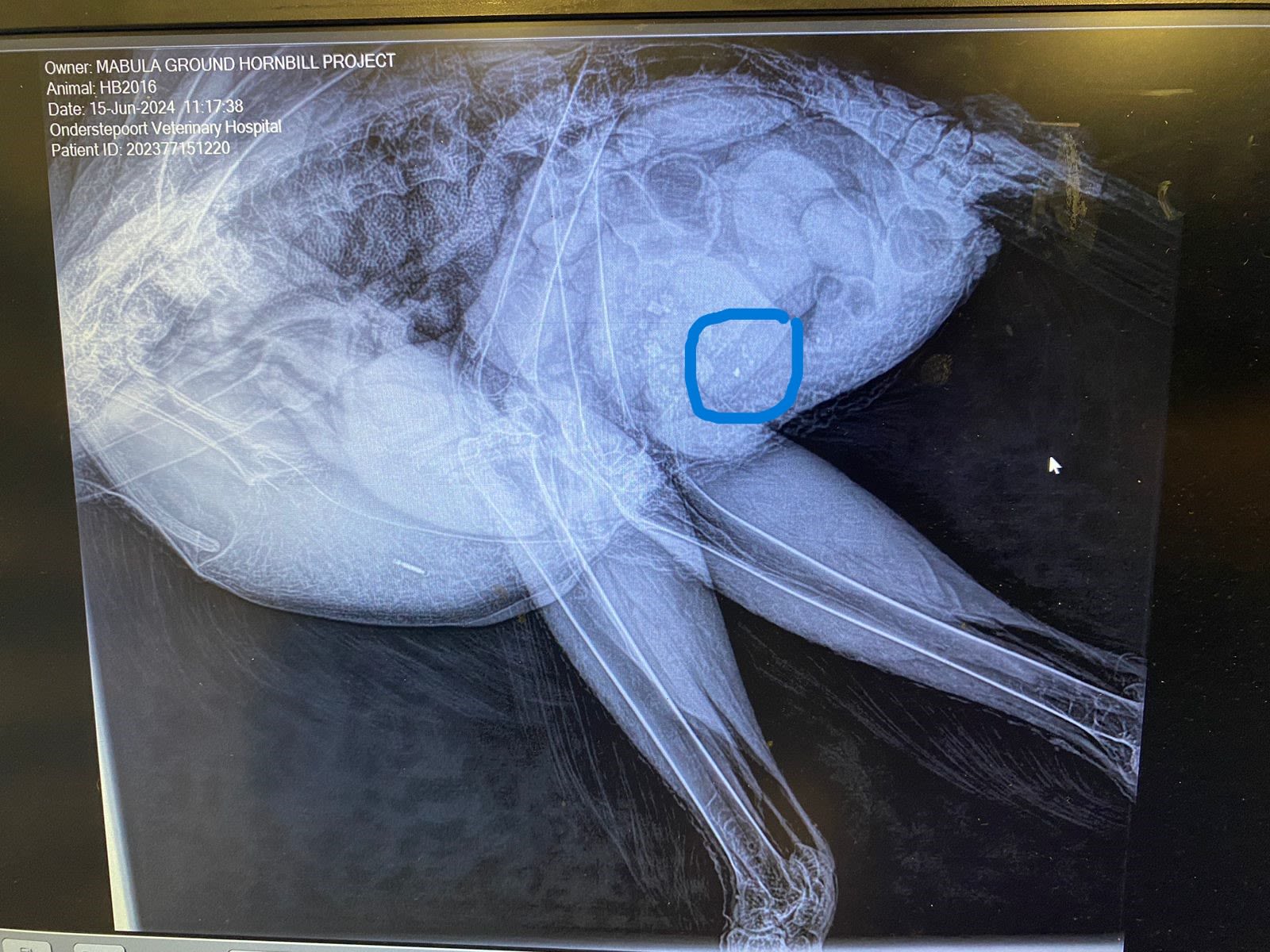
Lead toxicosis is currently the greatest threat to the success of the Southern Ground-hornbill conservation project. This year we have sadly lost two birds to lead poisoning but successfully treated another three (as always a massive shout out to Dr Katja Koeppel and her team at the Wildlife Unit at Onderstepoort Vet Hospital). The population can never recover from losses like this, so we are growing our education campaign to reach more people.
We hosted two landowner meetings together with our wonderful local partners (AMES Foundation, Qwabi Private Nature Reserve and the South African Hunters and Game Conservation Association) and, had over 100 landowners, reserve managers, field guides, rangers and farmers attend. Some were extremely supportive and felt that switching to lead-free ammunition should be non-negotiable, whilst others felt that agriculture and conservation could never co-exist, so there is still much work to be done.
This clarified for us what kind of targeted awareness campaigns we need to now conduct to ensure a safe environment for Southern Ground-hornbills (and all the other threatened species that share the landscape such as multiple vulture species, secretary birds, owls, and many small scavenging species).
Sadly, the misery didn't end there....
In April, we lost one of our newly reintroduced males to electrocution! He thought a transformer box would be a good place to perch, but unfortunately, this was not the case. To-date we have lost 4 reintroduced birds to electrocution - it doesn't sound like a huge number but each loss is a blow and a little bit of heart-ache.
Adding to this tragedy was the loss of a female bird, to lethal aggression by another female of a nearby group. The groups crossed paths and the young female was attacked, likely injured and we couldn't pick up her telemetry signal after that.
But we must carry on... We are focussing on mitigating against electrocution with renewed urgency, by working with Eskom and land-owners to find ways of making transformer boxes safe, and discouraging the birds from going near them. This is an expensive and vast exercise, but given the number of birds we are losing to this, it needs to be done.
Where are all the Eastern Cape ground-hornbills?
In preparation for wrapping up the first nation-wide four-year ground-hornbill population analysis, we drove all over the Eastern Cape, trying to find all the ground-hornbills we could. We did this because we realised there were large gaps across their historic range in the Eastern Cape, which meant that our usual WhatsApp champion monitoring wasn't reaching into all areas, and we needed to confirm if these gaps were simply a lack of reporting or indeed local extinction.
To find as many groups as we could, and raise awareness while we went, we plastered almost every restaurant, spaza shop and school we came across with posters and flyers. We also hosted an informational talk on the conservation of ground-hornbills in Makhanda, which was a great success!
We found over 60 new pentads (grid squares) which, each roughly represent a ground-hornbill group, so 60 previously unrecorded groups! We were relieved to find out that the previous lack of data for these areas was not because there were no ground-hornbills, but simply because we were not reaching the people in these areas via our usual WhatsApp channels. We have since create connections across the Eastern Cape that are supplying ground-hornbill sightings from the areas that we visited. The population is still very fragmented but not as bad as we previously thought.
THEN ........This map shows the occurrence data we had in March 2024, before we embarked on our online campaign and three epic road trips.
THEN ........This map shows the occurrence data we had in March 2024, before we embarked on our online campaign and three epic road trips.
and NOW:
and NOW:
All the green pentads (grid squares) are groups that were seen in the past year, although the orange, red and black ones are older sightings, they are still incredibly useful to us, as it gives us an indication that there might still be groups that we just haven't seen yet, and have to be on the lookout for!
Join us at the BirdLife South Africa Bird Fair!
Saturday, 24 August 2024
Come and spend the day at the BirdLife South Africa Bird Fair. Promising to be an epic day of birding excitement at the Country Club Johannesburg (Woodmead) or online via Zoom.
Join in on early morning birding walks, talks by inspiring guest speakers and workshops aimed at kids, beginner birders and garden birders, as well as those who want to get to grips with LBJs.
Come and get to know us at the Mabula Ground Hornbill Project stand!
Find more info and book on BirdLife South Africa's website.
If you would like to support our work, please consider making a donation below. All funds raised go towards keeping these weird and wonderful birds in our landscapes.
And with that, the first half of the year has flown by. On to the next one!
With lots of love,
The Mabula Ground Hornbill Project Team
Want to get in touch? Contact us, or visit our website to learn more about what we do.
We would like to continue to send you our news and updates on matters regarding conservation, education and research. To remain on our mailing lists you don’t need to respond. Should you wish to no longer receive these emails, please click the "unsubscribe" link below. Thereafter you will no longer receive any correspondence from us.
We would also like to take this opportunity to assure you that your personal information (email and name) is controlled and securely stored. If you wish to continue receiving our updates, you needn't click anything. We will not share your information with third parties without your consent or use your details irresponsibly.



